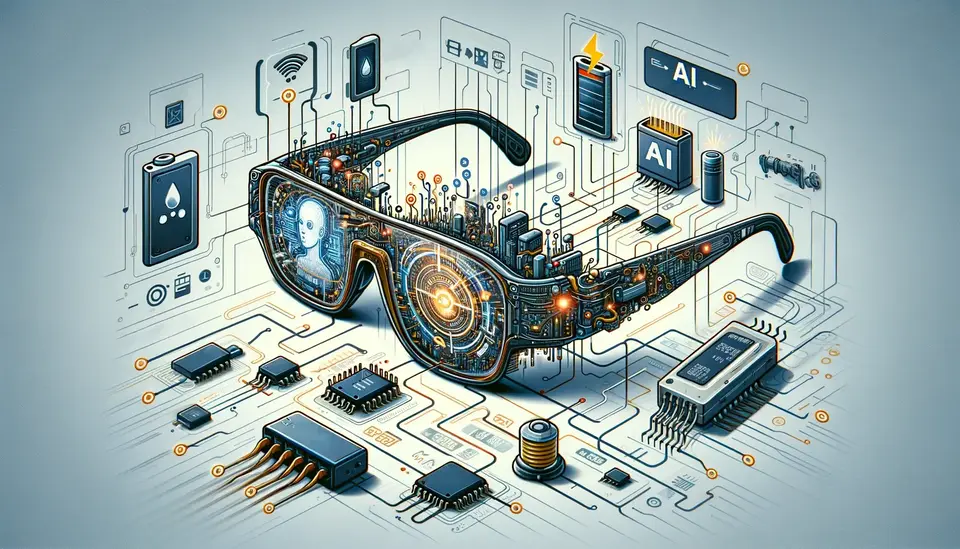What are smart glasses?
Posted on April 20, 2022 7 minutes 1296 words
Table of contents
Introduction
In an era where technology seamlessly blends with daily life, smart glasses emerge as a revolutionary product at the forefront of this integration. As we delve deeper into the realms of augmented reality (AR), virtual reality (VR), mixed reality (MR), and the expansive metaverse, smart glasses stand as a key player in this transformative journey. These advanced pieces of wearable technology not only redefine our interaction with the digital world but also open up a myriad of possibilities that were once confined to the realms of science fiction. This blog post aims to demystify smart glasses, offering insights into their functionality, applications, and the potential they hold for shaping our future.
Understanding Smart Glasses
At its core, smart glasses are a form of wearable computer glasses that add information alongside or to what the wearer sees. Unlike traditional eyewear, these glasses possess the ability to display data, connect with your smartphone, and even capture photos and videos, offering an immersive experience that extends beyond mere vision enhancement.
The concept of smart glasses isn’t entirely new. It has evolved significantly from its rudimentary forms in the late 20th century to the highly sophisticated devices we see today. The journey of smart glasses parallels the evolution of computing and mobile technology, where each iteration brought about enhancements in size, functionality, and user interface. The modern version of smart glasses is sleeker, more powerful, and more integrated with other technologies compared to their predecessors.
Distinguishing smart glasses from regular eyewear is their capability to interact with the environment. Equipped with various sensors, these glasses can overlay digital information onto the real world, integrate augmented reality, or even provide a completely virtual experience. This integration of digital and physical realms sets smart glasses apart, making them not just an accessory but a powerful tool for interaction and engagement with the world around us.
Types of Smart Glasses
Smart glasses come in various forms, each designed to cater to different needs and experiences. At one end of the spectrum are AR smart glasses, which overlay digital information onto the real world. These glasses, like Google Glass, provide users with hands-free access to information such as notifications, navigation, and even real-time translation of foreign languages.
On the other end are VR headsets, such as the Oculus Rift, which offer a fully immersive virtual reality experience. These are primarily used for gaming and entertainment but are increasingly finding applications in training simulations and educational contexts.
There are also mixed reality (MR) glasses, like the Microsoft HoloLens and Apple Vision Pro, which blend elements of both AR and VR. These glasses not only overlay digital information but also allow interaction with virtual objects as if they were part of the real world. MR glasses are particularly promising for professional and industrial applications, offering innovative solutions in fields such as engineering, design, and medicine.
Each type of smart glass comes with its unique set of features and functionalities. While some focus on providing clear, high-resolution displays, others prioritize ergonomic design and user comfort. The choice of smart glasses largely depends on the intended use, whether it’s for casual everyday interaction, professional tasks, or specific industry applications.
Technological Components
The magic of smart glasses lies in their technological components. The most crucial part is the display technology, which can range from small projectors that cast images directly onto the retina to more conventional small screen displays. This technology is rapidly evolving, with newer models offering sharper and more vibrant visuals.
Sensors are another vital component. These may include accelerometers, gyroscopes, and compasses, which track head movement, allowing the glasses to understand and respond to how the wearer is moving and looking. Some models also include ambient light sensors and touchpads for additional functionality.
The processing power of smart glasses is akin to that of a smartphone, packed into a much smaller frame. This includes a CPU, memory, battery, and sometimes even a dedicated graphics processor. Connectivity is also essential, with most smart glasses offering Bluetooth and Wi-Fi capabilities, enabling them to connect to the internet and other devices.
Applications and Use Cases
Smart glasses are not just a novelty; they have practical applications that span across various sectors. In healthcare, for instance, surgeons use AR smart glasses to display vital patient information during procedures, enhancing precision and efficiency. In education, these glasses bring an interactive dimension to learning, making complex subjects like anatomy or astronomy more tangible and engaging.
The retail and fashion industries are also harnessing the power of AR glasses to offer virtual try-ons, allowing customers to see how clothes or accessories would look on them without physically trying them on. This technology is not only convenient but also revolutionizes the shopping experience.
In the field of entertainment, AR and VR smart glasses provide immersive experiences, taking gaming and movie-watching to an entirely new level. Users can experience being in the heart of the action, whether it’s battling in a virtual world or touring a historical site from the comfort of their home.
Furthermore, smart glasses are increasingly used in professional settings. They assist in complex assembly tasks in manufacturing, provide real-time data and analytics in logistics, and enhance on-site project visualization in architecture and construction. The potential applications of smart glasses continue to grow as the technology advances, promising even more innovative uses in the future.
Challenges and Considerations
Despite their immense potential, smart glasses face several challenges that impact their widespread adoption. Privacy concerns top the list, as the ability of these devices to record and share videos can lead to discomfort and distrust among the public. Addressing these privacy issues is crucial for gaining consumer confidence.
Health implications are another consideration. Prolonged use of smart glasses could potentially cause eye strain or headaches, and manufacturers are continually working to improve the ergonomics and comfort of these devices.
Cost is also a significant factor. High-quality smart glasses are often expensive, limiting their accessibility to a broader audience. However, as the technology becomes more mainstream and production costs decrease, it’s likely that smart glasses will become more affordable.
Finally, the user experience and design of smart glasses are critical for their adoption. Balancing functionality with aesthetics, ensuring ease of use, and delivering a seamless integration with other devices are essential aspects that manufacturers need to focus on.
Conclusion
Smart glasses represent a significant leap in the integration of technology into our daily lives. They are not just a testament to human innovation but also a key to unlocking new dimensions in how we interact with the world around us. From enhancing professional tasks to revolutionizing entertainment and education, the potential of smart glasses is vast and varied.
As we look towards the future, it is evident that smart eyewear will play a pivotal role in shaping our interaction with both the physical and digital worlds. The convergence of AR, VR, and MR technologies in smart glasses promises a future where the boundaries between reality and virtuality blur, offering experiences beyond our current imagination.
However, this future is not without its challenges. Addressing concerns around privacy, health, cost, and user experience is crucial for these technologies to be embraced widely. As the technology matures and these concerns are addressed, we can expect smart glasses to become as commonplace as smartphones are today.
The journey of smart glasses is just beginning, and its trajectory is as exciting as it is uncertain. What is certain, though, is their potential to revolutionize our lives, work, and play. As we continue to explore and expand the capabilities of smart glasses, we step closer to a future where technology and reality coexist in harmony, enhancing our capabilities and experiences in ways we have yet to fully comprehend.








